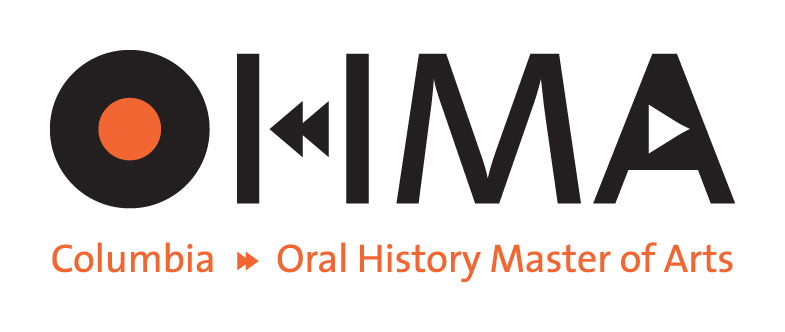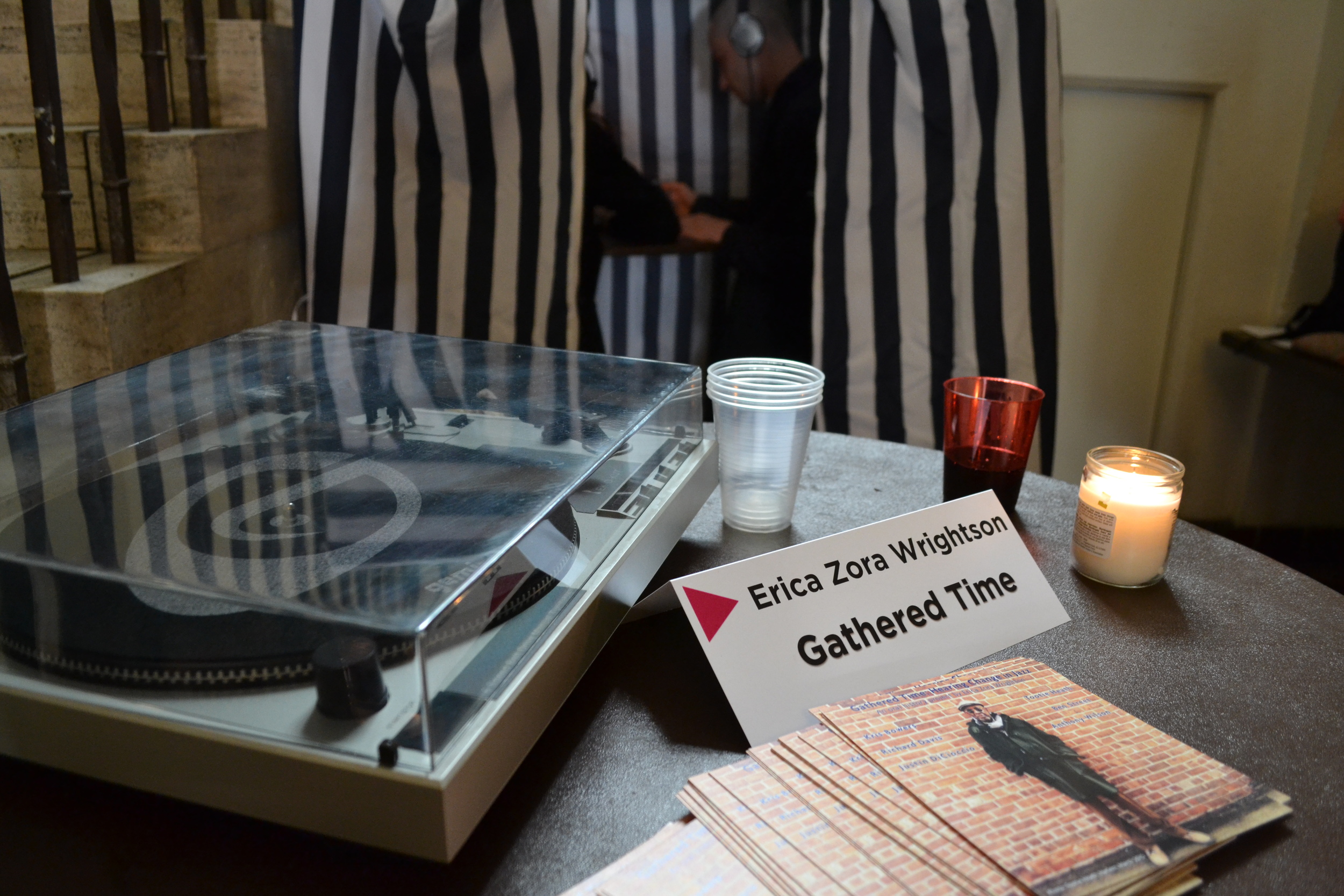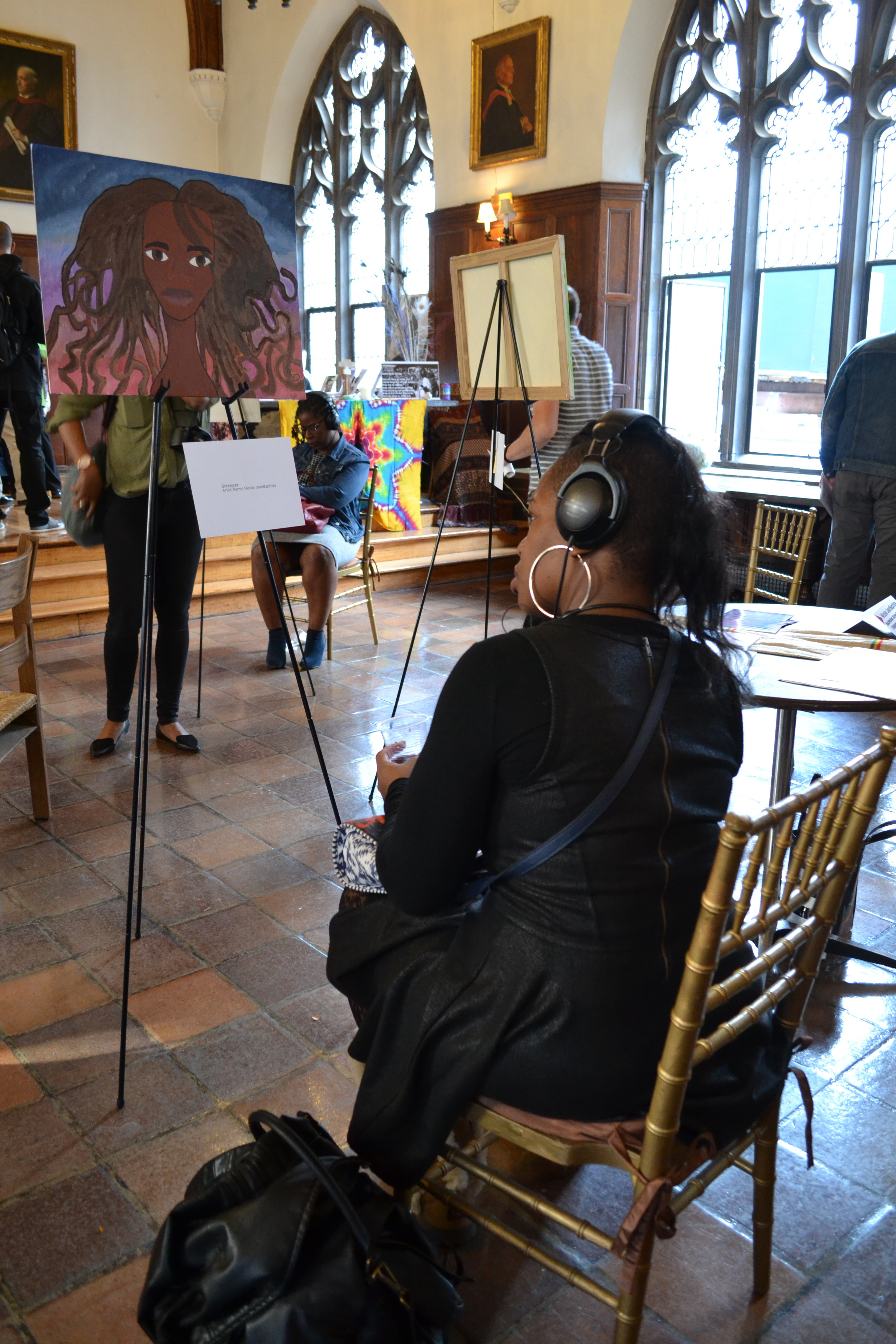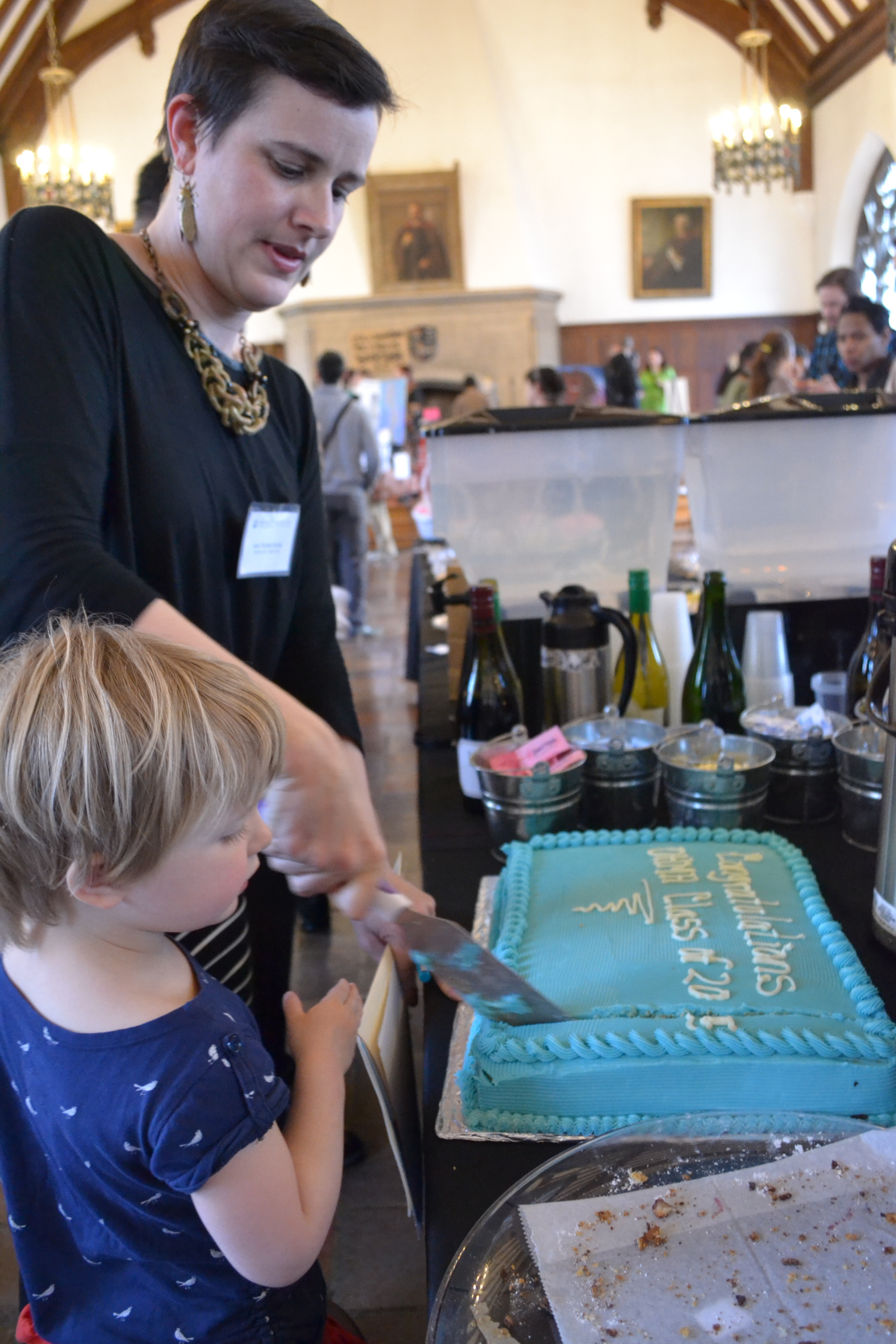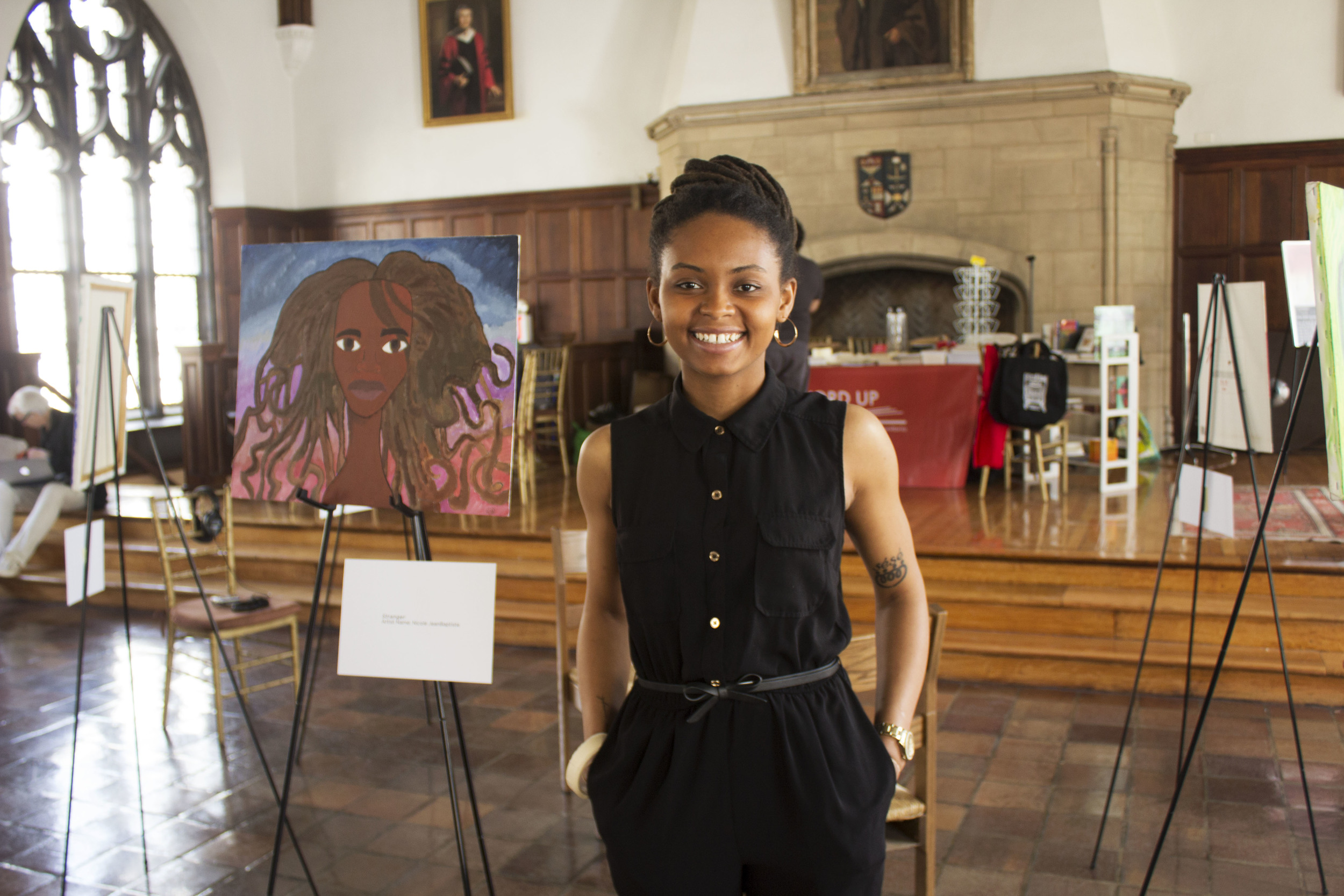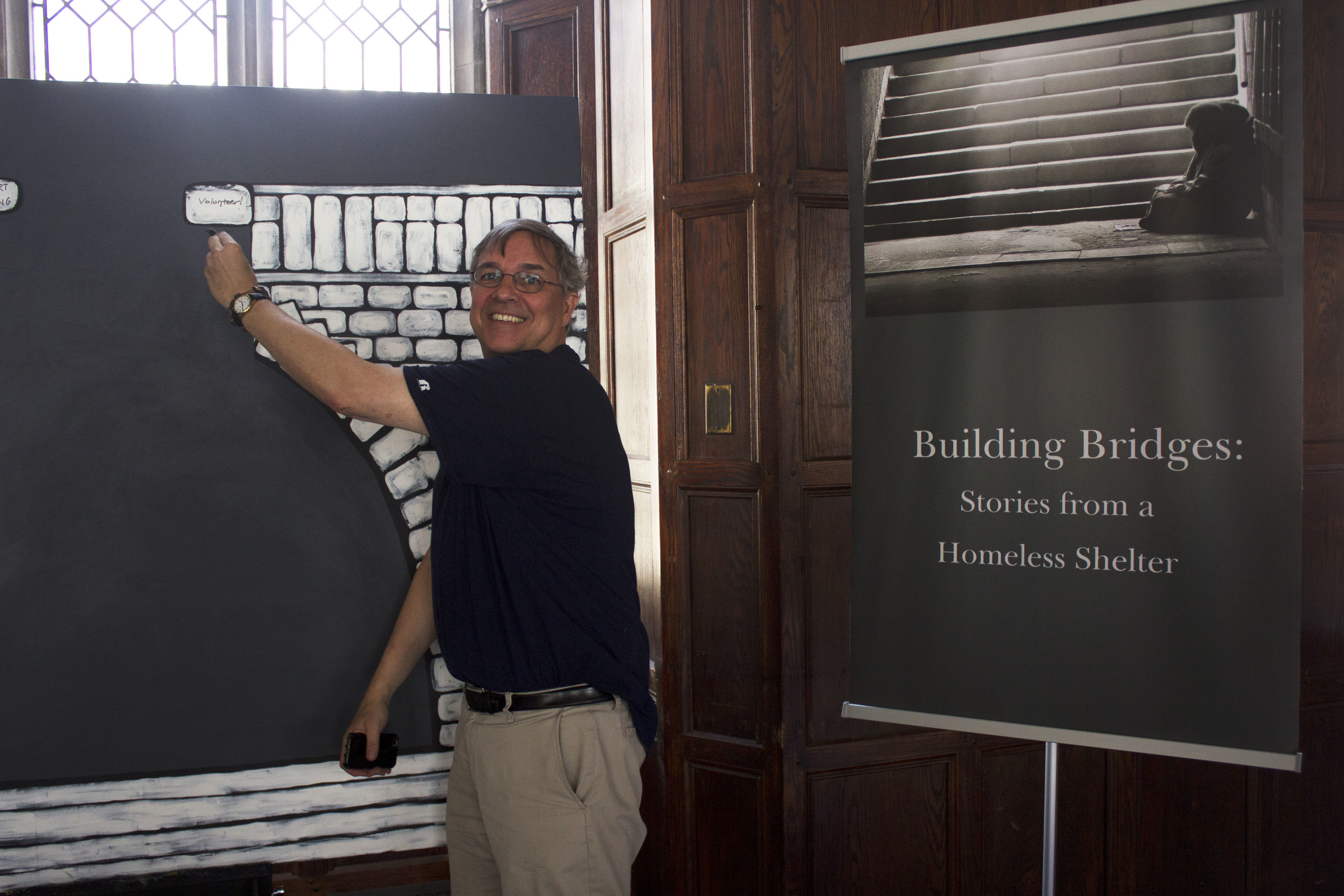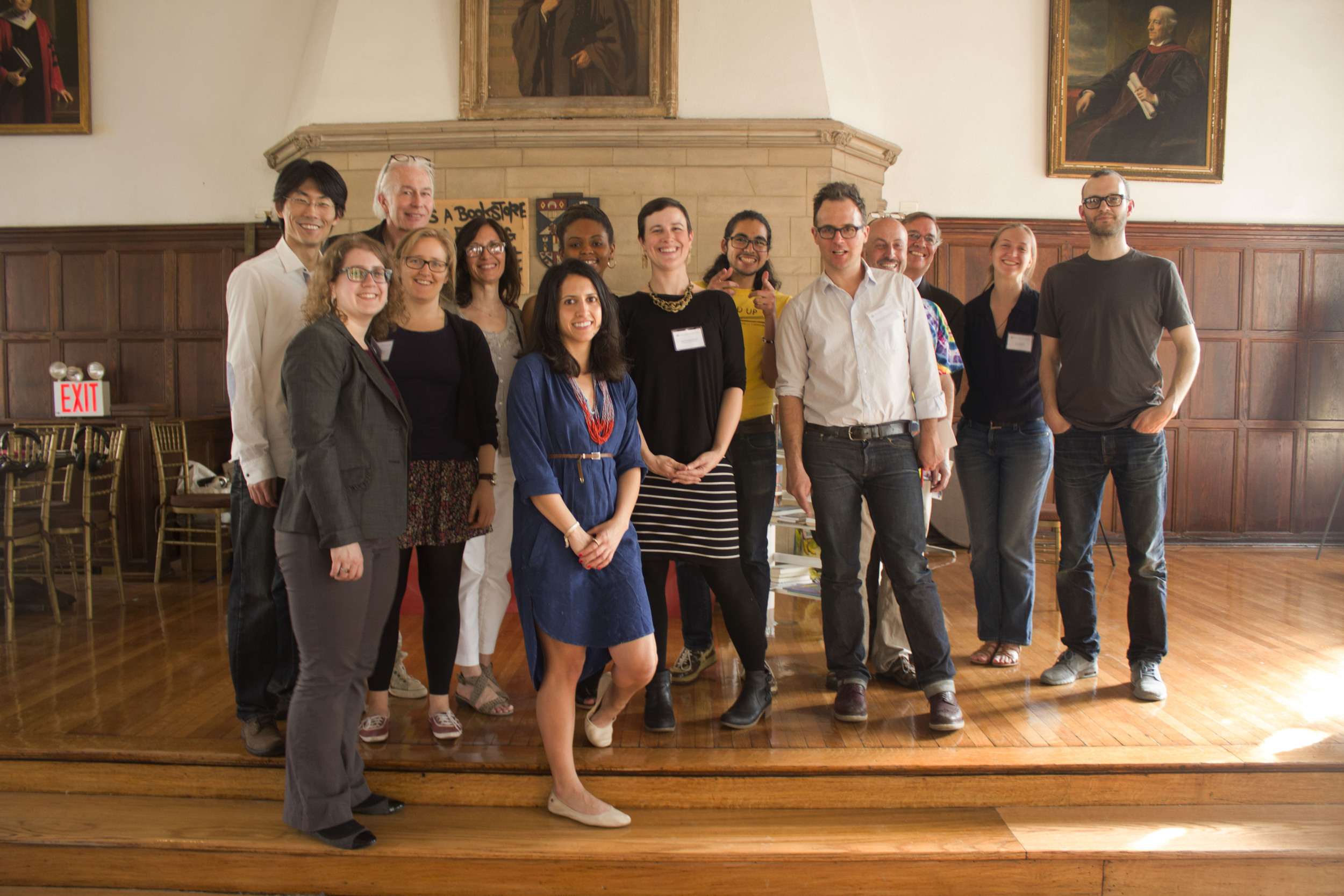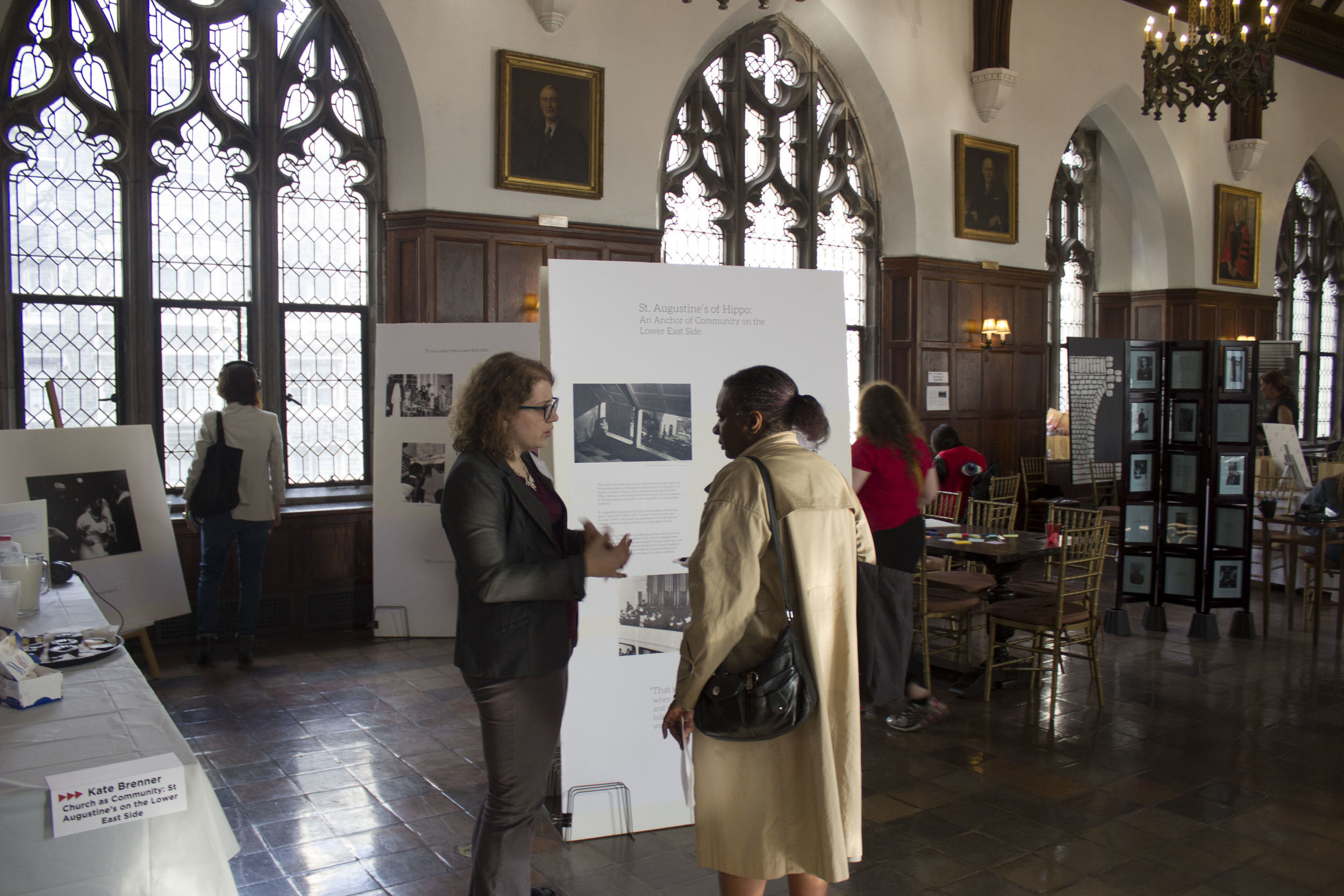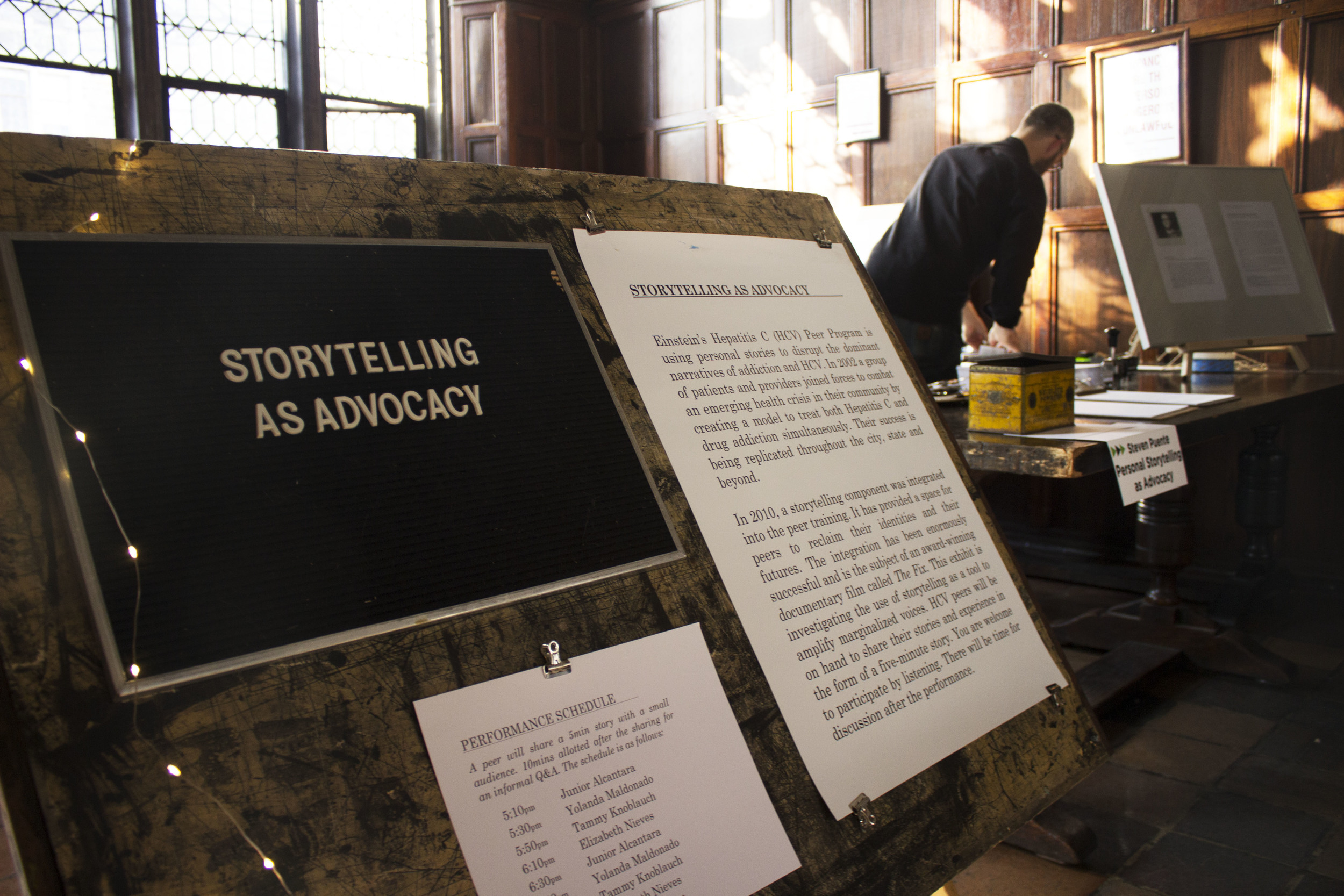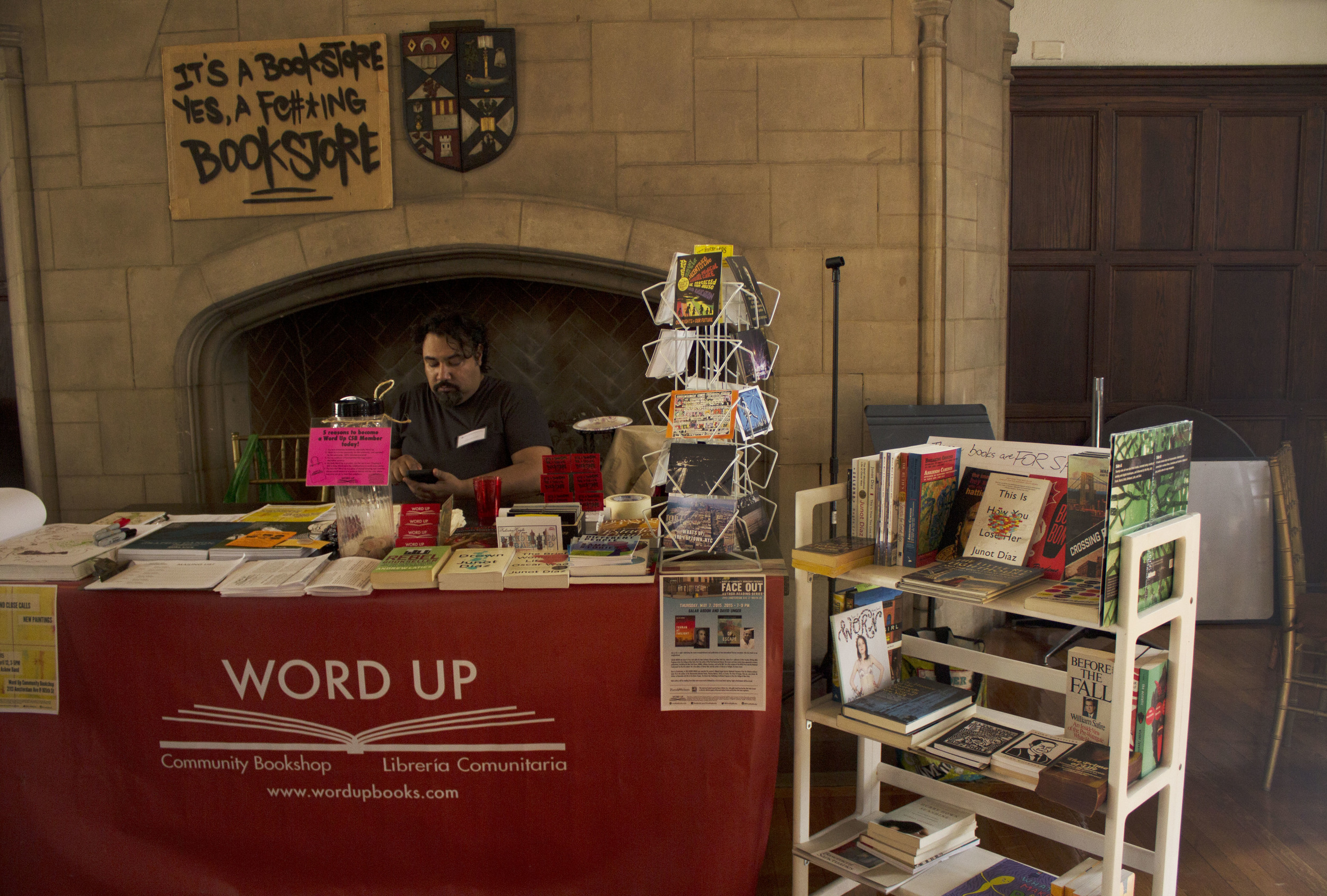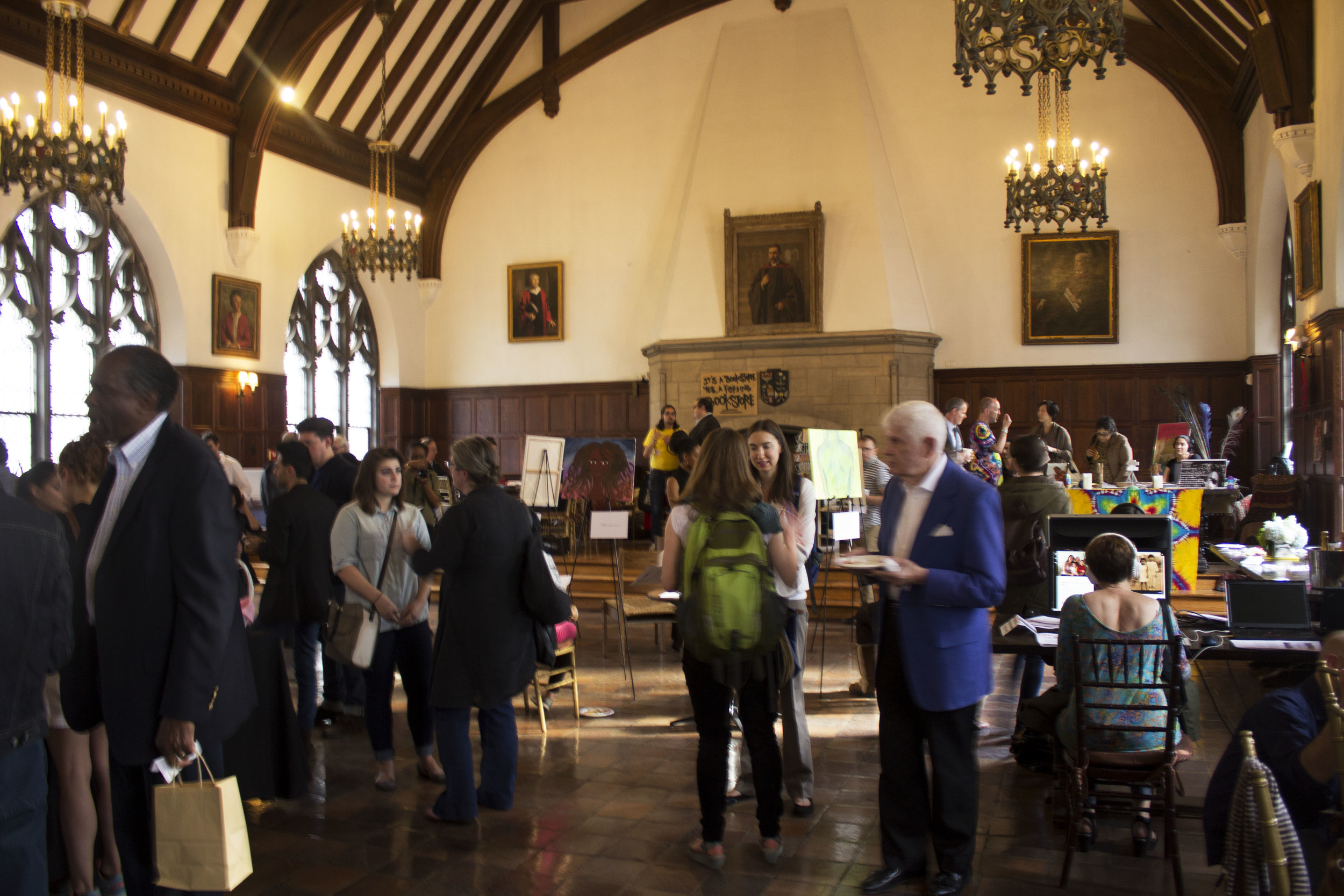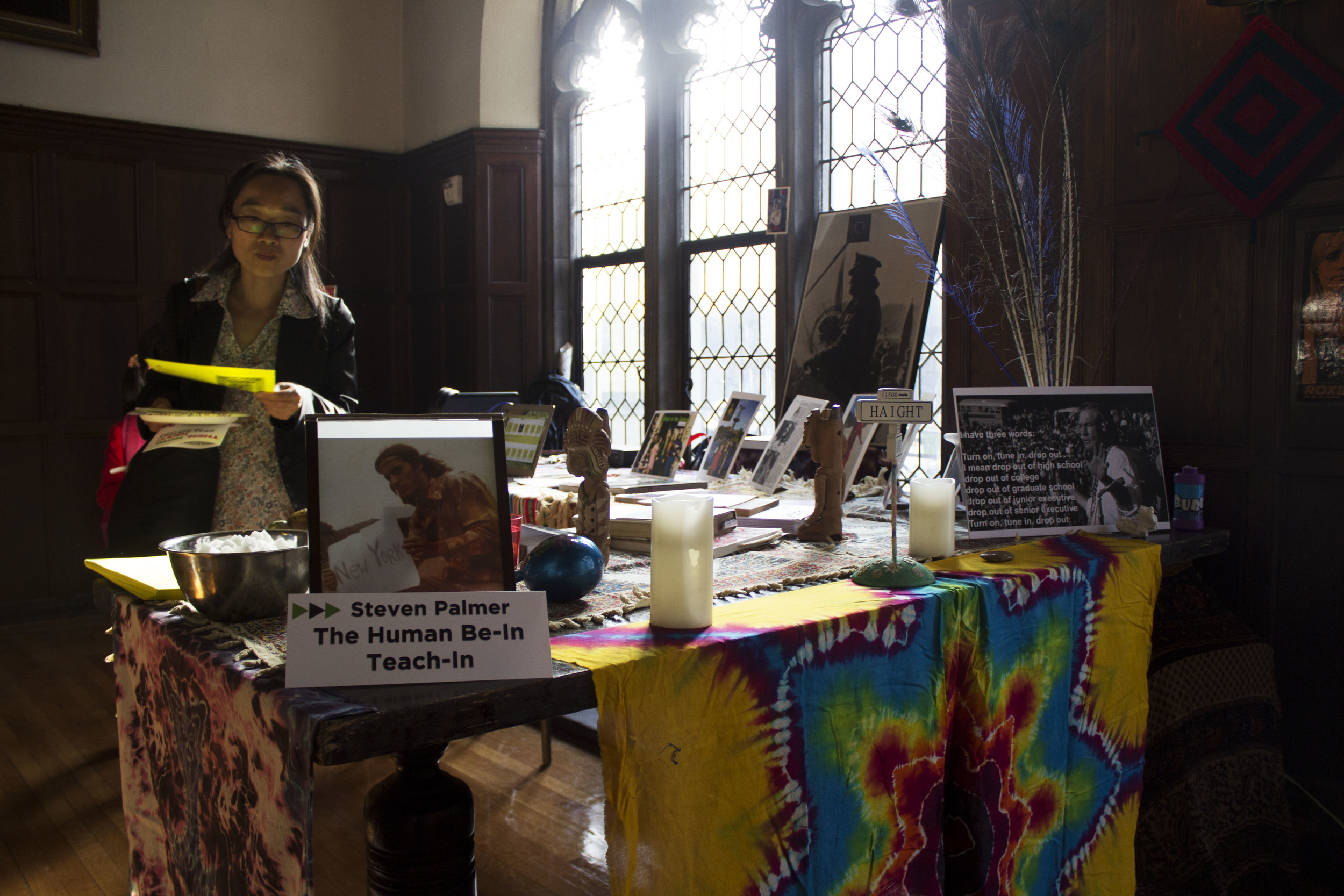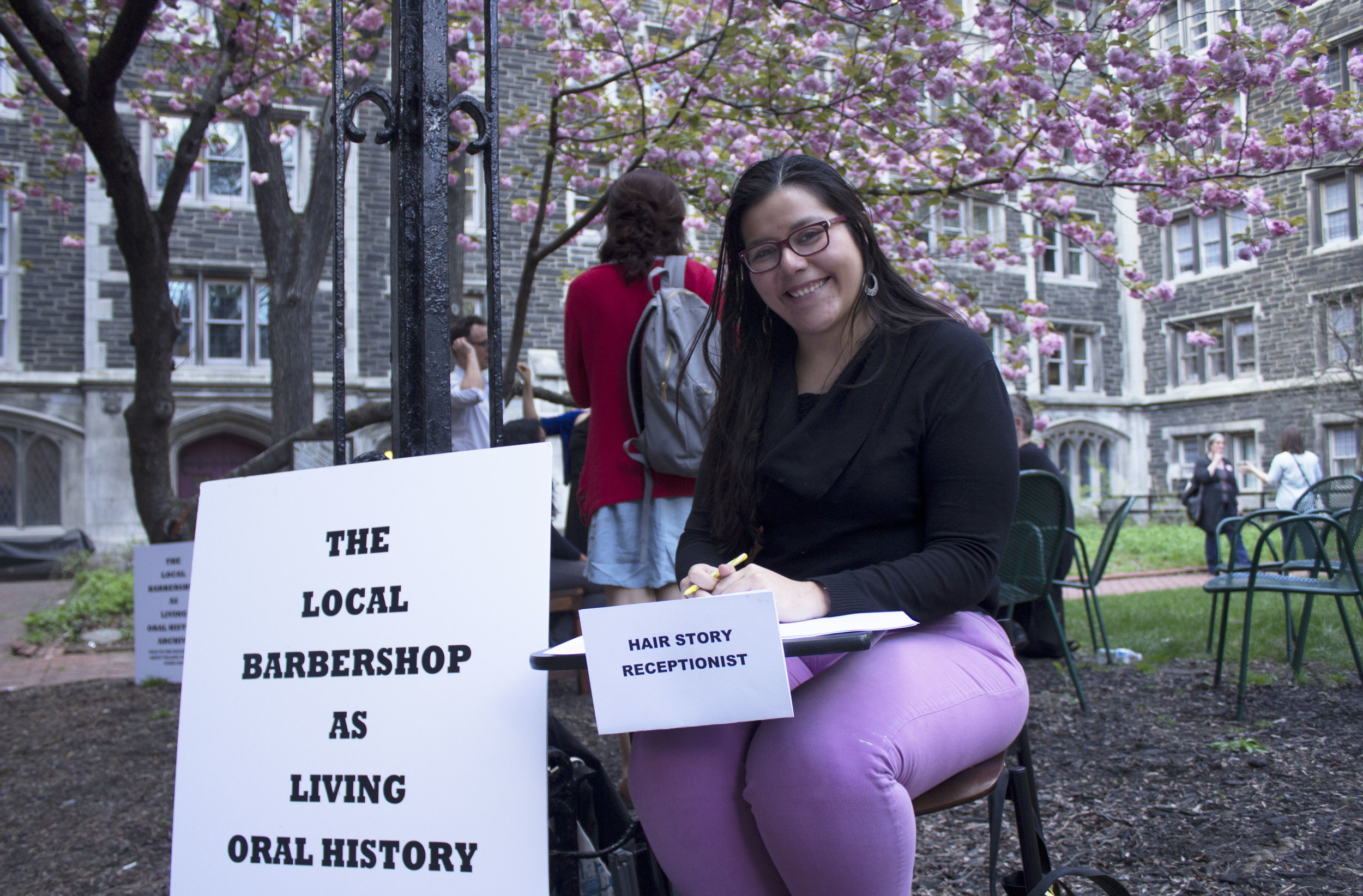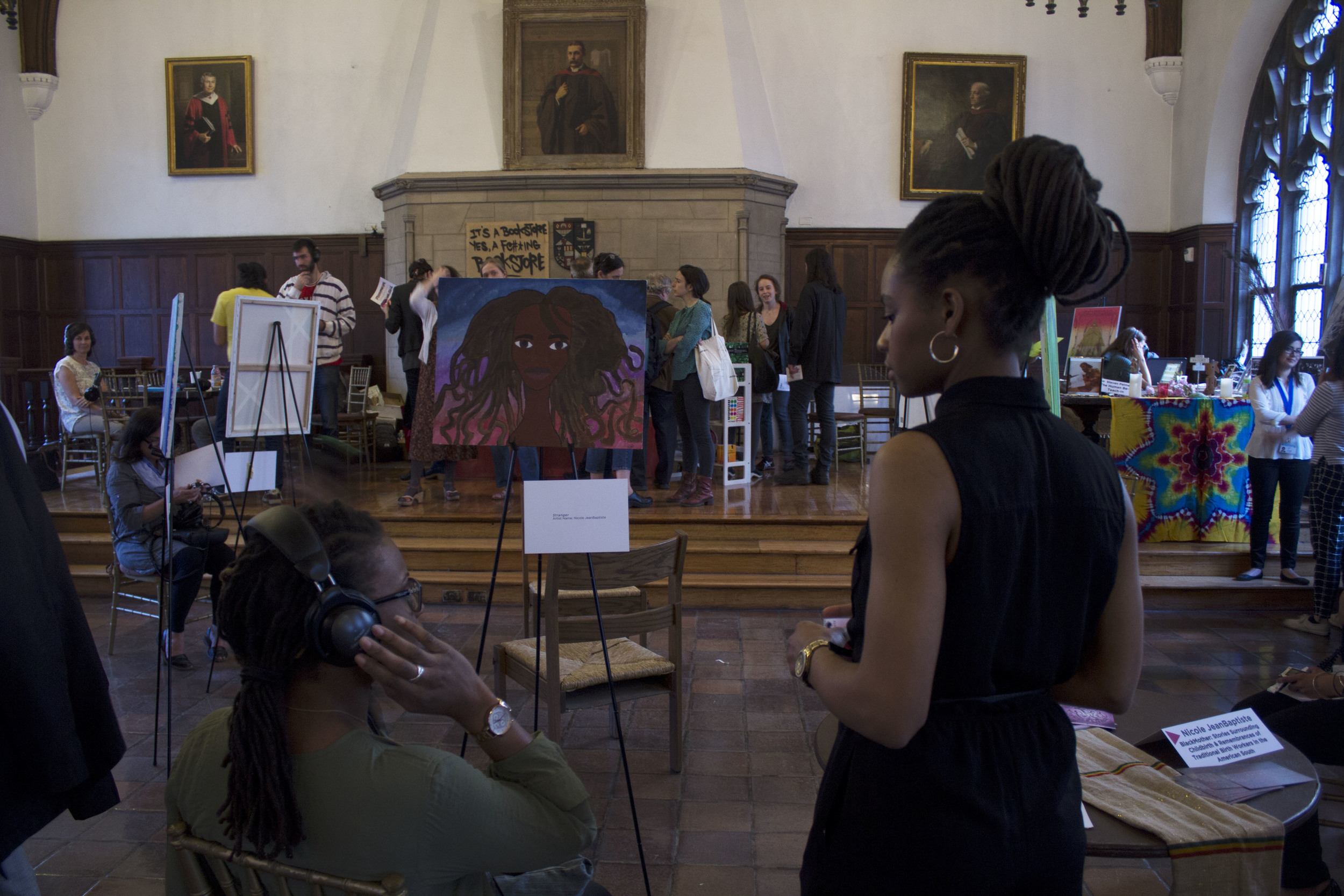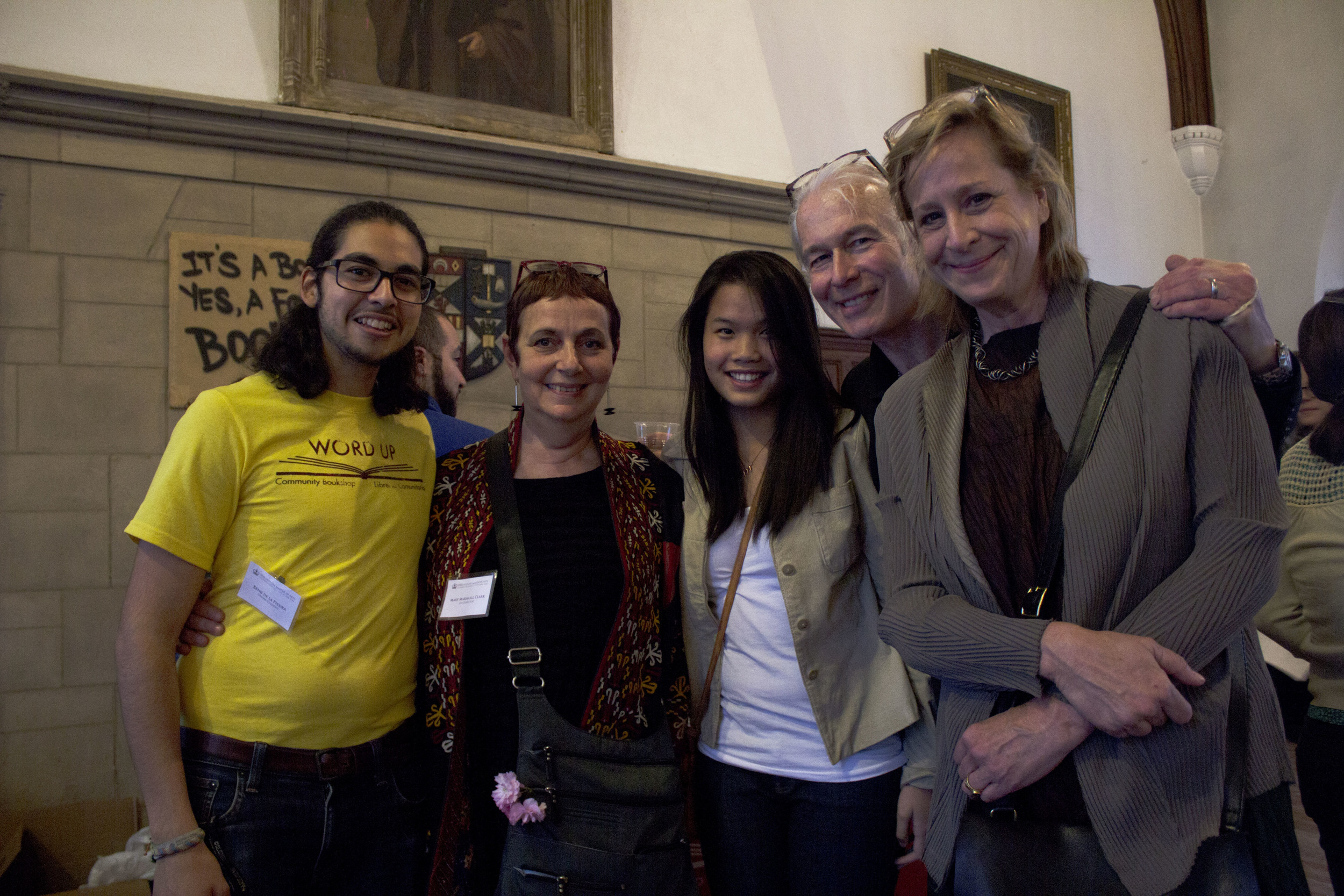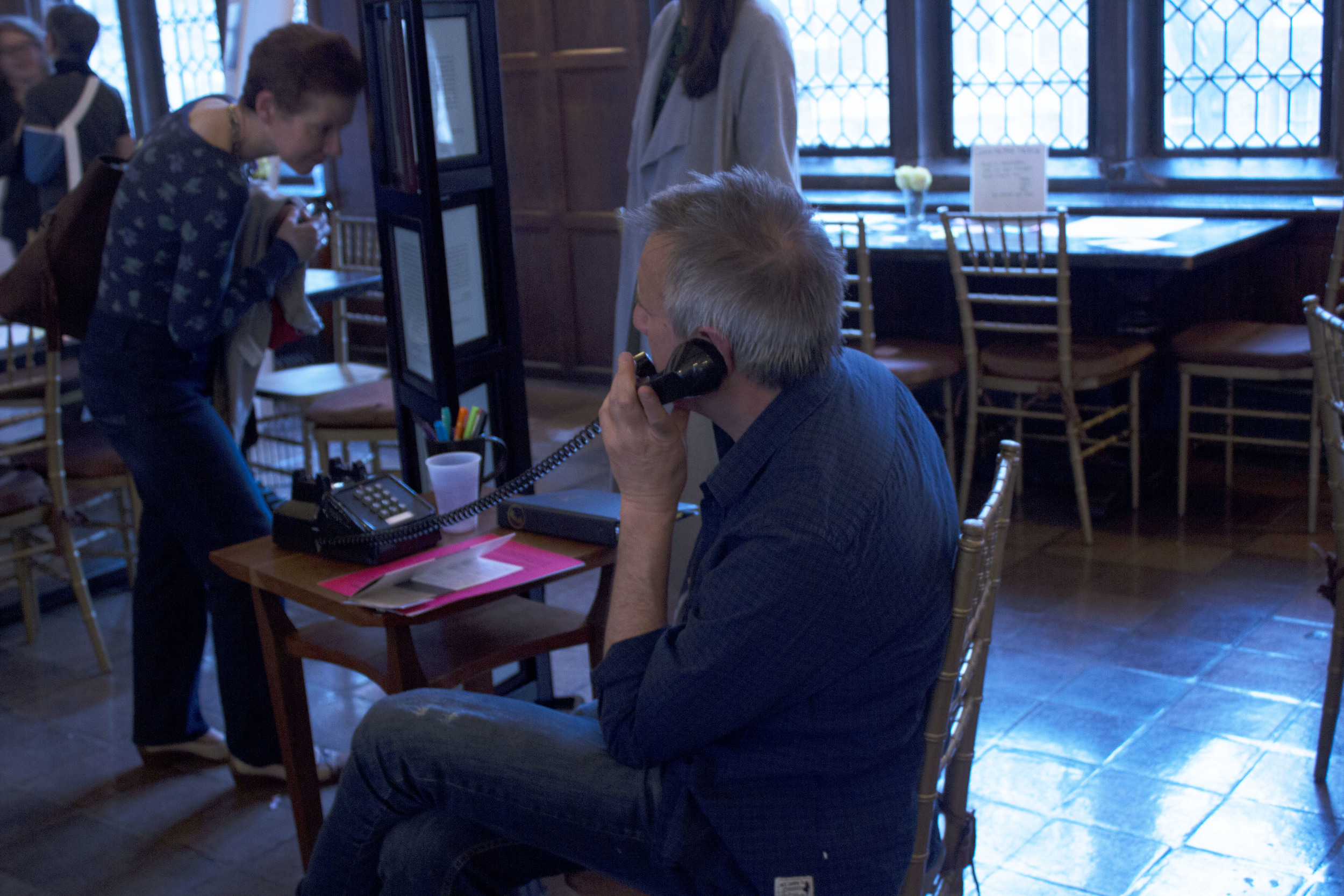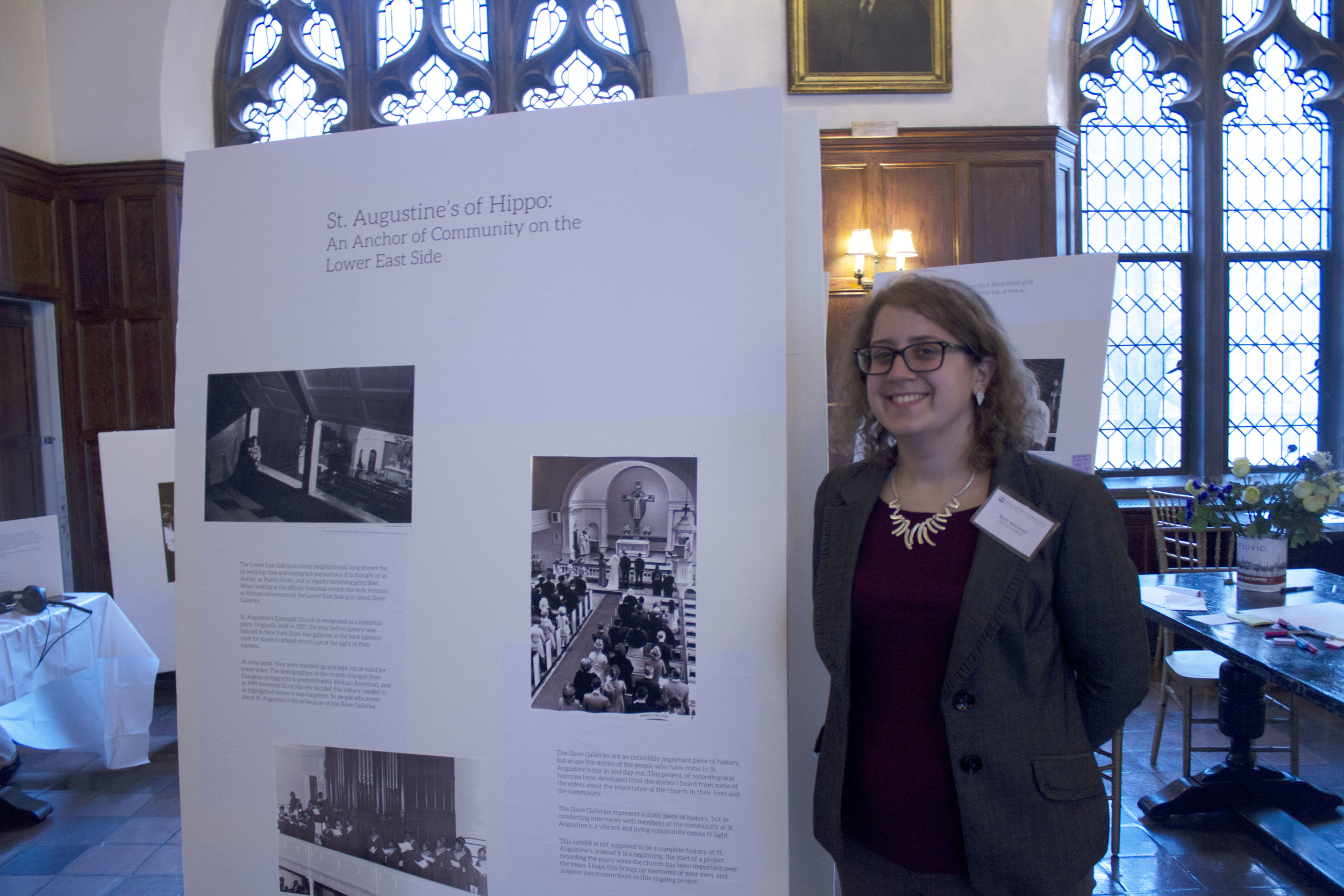Bill Smith is a current OHMA student. In this post, inspired by Dr. Ron Doel, he looks to image analysis as a tool for a deeper reading of oral histories.
Read MoreThoughts on Pursuing a Career in Oral History
Jacob Horton '14 is an OHMA graduate and intern with the Nantucket Historical Association's library. In this post, he reflects on careers in the field of oral history.
Read MoreTalking About Love: documentary interview styles
Liz Strong is a current OHMA student. In this post, she looks at interview tactics in documentary film.
Read MoreHow to Get a Grant
Steven Puente is a current OHMA student. In this post, he describes his visit to the Foundation Center Library, located in New York City.
Read MoreThen, Now, Next: Photos from OHMA's Year-End Exhibition Event
On April 29, our Oral History Masters' students and faculty curated an immersive and impressive space for sharing the stories that they collected through their research this year. Check out the photos below!
Photos by Erica Fugger and Brian Buckley.
Read more about the event.
Never Turn off Your Tape Recorder: Stories I Skipped
Hongru Pan is a Master's candidate in the department of History at Columbia. Watch the full lecture on YouTube.
Read MoreSubversion: One of the Points of Oral History?
Jonathon Fairhead recounts a discussion between Professor Alessandro Portelli and students in the Columbia University Oral History Masters Program, 4 April, 2015. Watch the full lecture on YouTube.
Read MoreFOCUS OR DIGRESSION: The Oral History Interview
Lateef Rahaman is currently a research scholar doing his Global Internship in Digital Humanities, Columbia University. He is an information technology engineer from Kwara State University, Malete, Nigeria. He participated in the OHMA program in the Spring of 2015 as part of his training. Watch the full lecture on YouTube.
Read MoreBearing Witness to the Witness Seminar
Nicole JeanBaptiste is a current OHMA student. In this post, she compares the 'witness seminar' to the conventional one-on-one interview.
Read MoreDid You Listen?
Leonard Cox is a current OHMA student. In this post, he reflects on what it means to truly listen.
Read MoreThe Challenges of Informed Consent
Helen Gibb is a current OHMA student. In this post, she discusses the challenges associated with interviewing 'vulnerable populations.'
Read MoreAn illuminating account of tango as a transnational practice: a review of Kathy Davis’s Dancing Tango
DongKue Lee is a current OHMA student. In this post, he explores Kathy Davis' account of tango as a transnational practice.
Read MorePicture This: Ron Doel on the Importance of Looking Closely at the History of Science
Erica Zora Wrightson is a current OHMA student. In this post, she discusses Ron Doel's multidisciplinary approach to studying tensions in the documentation of the history of science.
Read MoreOral history invites us in
Audrey Augenbraum is the communications and outreach coordinator for OHMA, CCOHR, and INCITE. A native of New York City, she is constantly surprised by the important and oft-neglected facets of her community that OHMA students illuminate. In this post, she reflects on witnessing preparations for OHMA's April 29 year-end event, Then, Now, Next: Oral History and Social Change.
Read MoreAlumni News
This week we’ve had quite a lot of alumni announcements to share with our readers:
Alumna Sara Cohen Fournier contributed to a recently published collection of articles, entitled Beyond Testimony and Trauma: Oral History in the Aftermath of Mass Violence (ed. Steven High). The book surrounds ways to engage dealing with trauma and moving beyond in long form oral histories. It is based on the research "Life Stories of Montrealers displaced by war, genocides and human rights violations," which took place for 5 years in Montreal and collected stories from Rwanda, Haiti, Holocaust, and North African Jewery.
Alumna Liza Zapol has been working in collaboration with artists on a project on Embodied Mapping in the Lower East Side, sponsored by iLAND and the Lower Manhattan Cultural Council. This weekend (Friday, April 17 and Saturday, April 18, 2015) they will be hosting a symposium about this work and you can participate in some collaborative workshops for free. Check it out!
On May 14th and 15th, the Manhattan Repertory Theatre in New York is hosting full productions of alumnus Sam Robson’s play Timothy and Mary. Robson wrote the play based on oral history interviews he conducted for his OHMA thesis, for which he interviewed people with dementia and their family members and caregivers.
Alumna Sarah Loose, co-founder of Groundswell: Oral History for Social Change, was awarded the Radcliffe Oral History Grant this year. Her project, Breastfeeding & Migration, explores the connections between motherhood and migration—specifically the impacts of immigration and immigration policy/enforcement on infant feeding practices. Using a combination of oral history, photography, community organizing, participatory research and popular education, the project aims to:
- document and share the experiences of immigrant mothers (especially low-income and undocumented immigrant mothers),
- identify barriers to immigrant parents’ right to choose how to feed their infants and potential solutions, and
- support the efforts of immigrant mothers in advocating for their health, the health of their babies, and their basic human rights, dignity, and self-determination.
Ultimately, Breastfeeding & Migration seeks to contribute to organizing efforts at the intersections of gender and racial justice, workplace and immigrant rights, and maternal, infant and public health.
Alumna Elisabeth Sydor is hosting a staged reading of her thesis, Stories from the Carriage Trade, on Saturday, April 25, 2015 at 8 pm. Hear inside tales of the carriage business in the 1980’s, when Hell's Kitchen's horse-drawn carriages still trotted the streets of New York City any time of the day or night. The evening will be narrated by former carriage drivers Dave Forshtay, Maggie Goodman, Bryan Northam, Åsa Jahnke Stephens, and Elisabeth Sydor - from the book of their oral histories and Elisabeth's written recollections, developed from her masters thesis for OHMA. Free admission and no minimum, but purchase of drinks/dinner go toward the room rental - much appreciated!
Alumna Crystal Baik will be the keynote speaker at Williams College's Asian American Popular Culture conference this week (sponsored by Asian Americans Students in Action, or AASiA)-- one of the first Asian/American studies conferences organized by small liberal arts colleges in the Northeast.
Alums Erica Fugger and Anna Kaplan were elected to the board of Oral History in the Mid-Atlantic Region (OHMAR) at their annual conference last week!
At the OHMAR conference, April 9 and 10, 2015. Left to right: Erica Fugger, Cameron Vanderscoff, Cameron Donald.
It’s a pleasure to see our alums’ innovative work flourish in such a diverse array of fields—from dance, to theater, to pure oral history!
News Brief: The Latest in Oral History VI
Kate Brenner is a current OHMA student. Hailing from the frozen tundra of Wisconsin, she spends a lot of time laughing at New Yorkers who complain about the cold, and generally bemoaning a lack of availability of cheesecurds. When she's not busy perpetuating stereotypes about Midwesterners, she explores the dynamics of group interviews and story circles to better capture the history of a community.
The last round-up I did was thematic, and while I was planning on making another focused one, I’ve just come across a lot of compelling projects that do not connect in any way, so this is a selection of recent items that caught my attention.
Of course the week after I do a post entirely about photography-based oral history projects, I’m sitting in the main room at the Oral History of the Mid Atlantic Region conference, and there is a presentation on The Graying of AIDS, which tells the stories of older adults living with AIDS. Originally a photography project, they began collecting stories as well and now it has morphed into this larger oral history project as well.
Read Larry's story at www.grayingofaids.org
The Museum of Modern Art in New York just opened an exhibit on Jacob Lawrence’s iconic series of paintings on the Great Migration. The exhibition website is robust, with a variety of extra media. Though most of it is recordings of songs and poems, I was pleased to see how seamlessly they integrated oral history clips in a few parts. The oral histories are taken from Behind the Veil: Documenting African American Life in the Jim Crow South, where you can actually listen to the full interviews. Furthermore, you can read about the artist himself in an oral history interview at the Smithsonian from 1968.
By Jacob Lawrence
Seeing this integration of oral history made me revisit a site we looked at in class, Goin’ North by students at West Chester University. When learning about Omeka as a platform, we used it as an example. It serves as an online archive where you can access full interviews and transcripts with both African Americans who had migrated to Philadelphia and African Americans who had been longtime residents of the city. In addition, it has various multimedia essays, incorporating video, audio, and images. They explain the different types of new technology they used to create the website, and I think it serves as an example of how interactive and engaging an oral history project website can be.
If those two websites leave you wanting to know more about the Great Migration, last semester I read The Warmth of Other Suns by Isabel Wilkerson. It focuses on the lives of three people who experienced the Great Migration in different ways, and is based on extensive interviews with them, as well as others to provide a larger historical context for the main stories. It’s been out for a few years, but if you haven’t read it, it is beautifully written and incredibly compelling, and I cannot recommend it highly enough.
Forty years after the fall of Phnom Penh, the oral history project Transmissions 2015 is showcasing interviews with survivors of the Khmer Rouge that were conducted by young relatives of theirs, in order to combat the silence within families around that history.
Oral history projects often focus on the impact of an event on those who experienced it, but the Children of Holodomor Survivors Oral History Project looks at the impact of that event on survivors’ children.
Many museums incorporate and search out oral history to add to their collection, but the Jackson Hole Historical Society and Museum is going a step further, and showing their dedication to acquiring interviews by closing the museum for the entire month of April to focus on allowing members of the community to come by and record oral histories.
Because oral histories are primary sources, used by people other than their creators, there’s the possibility for them to be used in ways the creator may never have expected. I was bored and searching Kickstarter for projects, and while nothing came up for “oral history,” when I searched “folklore,” this comic book based on the folklore of ex-slaves as found in the WPA slave narratives came up. I’m sure neither the interviewers nor the narrators ever thought their stories might someday contribute to a comic book, but I think it’s awesome and shows the manifold uses for interviews.
Not so dirty after all
Leyla Vural is a current OHMA student. In this post, she discusses the use of the interview in the new musical Pretty Filthy.
Read MoreOpen House for Asian American Oral History Collective
Cindy Choung, an OHMA alum, is holding an open house for the Asian Oral History Collective on April 11, 2015. Don't miss it!
Read MoreWhen “Telling Your Story” Jinxes Your Freedom
Benji de la Piedra is a current OHMA student. In this post, he reviews the HBO documentary series The Jinx: The Life and Deaths of Robert Durst as oral history.
Read MoreWhen to Take the Lead: Oral history and the unspoken dynamics of interviewing
Liz Strong is a current OHMA student. In this post, she discusses the dynamics of interviewing through the lens of Kathy Davis' workshop on oral history and tango.
Read More